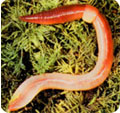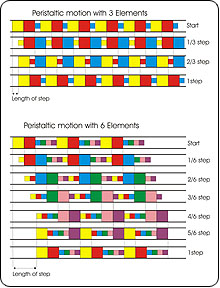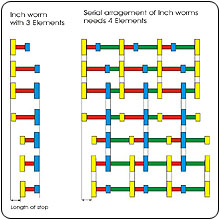|
Locomotion |
|
PADeMIS shall move in a tube like environment
and be supported by the dura and the vertebral body. The structure of PADeMIS
should be compliant and the environment contact should be on a large area.
Therefore, creeping and crawling of worms, larvae, snails, maggots and snakes
could be used as biological inspiration. The most promising locomotion type
for the application in the spinal canal is the - earthworm like - peristaltic
locomotion. The technical realisation is shown in the patent of Zimmermann
et. al., 2000. Following up the locomotion of the earthworm, the technical
peristaltic motion and for comparison the inch worm motion is explained here:



